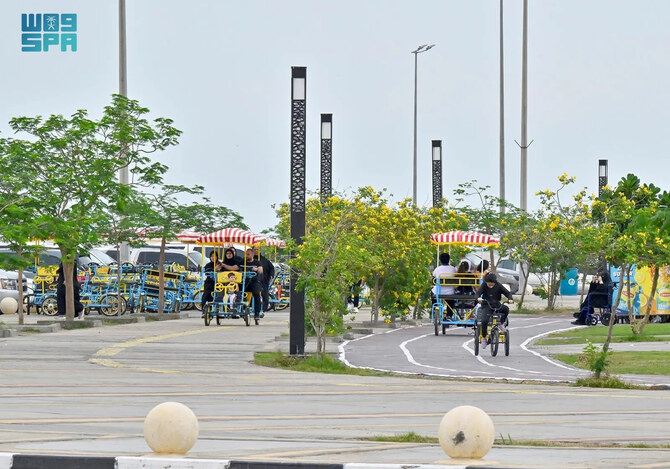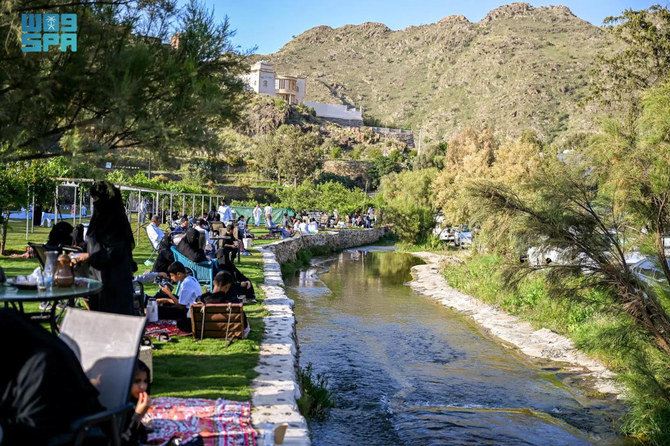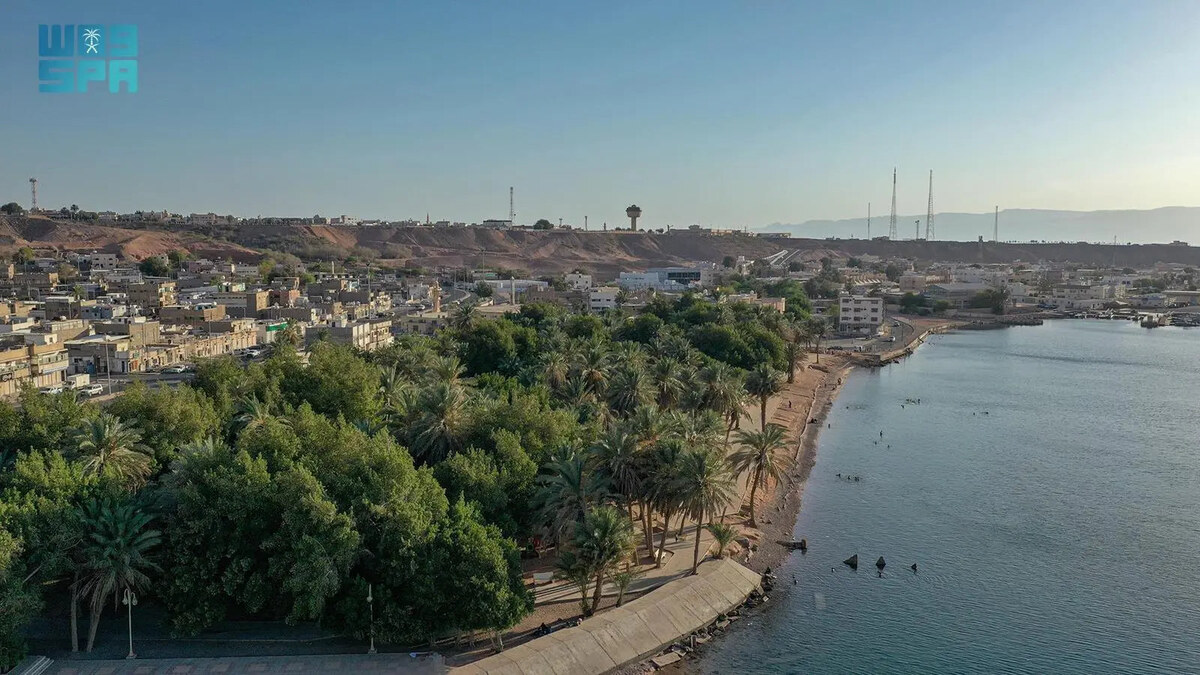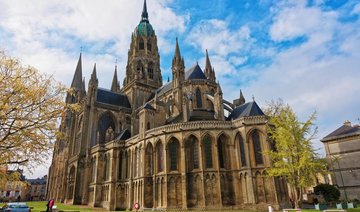SIEM REAP, Cambodia: If you close your eyes and listen carefully at sunset in Siem Reap’s old town, between the rhythmic chants and tinkling bells emanating from the local Buddhist temples, you will hear the faint, melodious sound of the Muslim call to prayer.
The muezzin issues his call from the Masjid Al-Neakma in the heart of Siem Reap’s “Muslim Village.”
The gateway to Cambodia’s UNESCO World Heritage temple city, Angkor Wat, Siem Reap is also home to a sizeable Muslim community.
It is exactly a year since Cambodia first turned to neighboring Thailand and Malaysia for help in developing its own halal industries, not to satisfy the nation’s Muslims, but to take its first steps into the lucrative halal food and travel industry.
Tourism numbers for Cambodia show that between 2015 and 2016, travelers from Muslim majority countries increased by 4.4 percent, a figure that is expected to continue rising.
Like everyone else that comes to Cambodia, all Muslim travelers will visit Angkor Wat, the country’s premier tourist attraction, with its famous “Tomb Raider” set of mammoth trees wrapped around 12th century temples.
Yet very few of them are aware of the local Muslim community in Siem Reap.
“Before I came to Cambodia, I had no idea there were even Cambodian Muslims and I was expecting a tough time trying to find food outlets and prayer facilities suitable for me and my family,” said Harun Rashid, a Muslim tourist from the UK who visited Siem Reap’s famous temple city with his family in September this year.
“But then I spoke to a Muslim friend who had recently visited and he told me about the ‘Muslim Village.’ I was like, ‘really? There’s a Muslim village near Angkor Wat?
“As soon as I heard this, I began looking for accommodation near the place he had described.”
“We have a halal slaughterhouse run by Muslims in the village. This is where we all get our meat for our homes and to use in the restaurants. I don’t serve alcohol in my one because I am a Muslim. This makes life easier for Muslim travelers to Siem Reap, who can also pray at our mosque which is always open for them,” says Nasir Mahmud, owner of the Siem Reap Backpackers Halal Restaurant.
Finding the Muslims of Angkor Wat meant Rashid and his family now had access to halal food and the local mosque, where they could pray with the local Muslims.
“I suddenly didn’t have to ask if the broth in my chicken soup was made with pork stock, or look around to find a place where I could pray. It doesn’t sound like much, but having people who understand your needs makes a huge difference when you are travelling, especially with family,” he said.
The Muslim village of Siem Reap is in Phum Steung May, west of the Siem Reap River and the town’s main tourist market, Psar Chas.
The community is centered around the newly built mosque, next to which is a religious school and the village cemetery.
The Muslim homes here are indistinguishable from their Buddhist neighbors, both communities live side by side.
“Here, Muslims and Buddhists all live together as friends and neighbors. We all get along,” says Mahmud.
The 48-year-old father-of-five, who also drives a local tuk tuk taxi, opened his restaurant two years ago, after seeing a hike in independent Muslim travelers.
“Travellers come from lots of Muslim countries, especially Malaysia, Indonesia and Singapore, and many of them are backpackers.
“Siem Reap is not cheap for travelers. At my restaurant people get a free drink on arrival and the best-value halal food in town.”
In time, Mahmud hopes to develop his restaurant into a hub for Muslim travelers.
He already offers a personalized tourism service, arranging local accommodation, transport and tour packages to visit all the country’s major sites.
Mahmud’s restaurant sits a few doors from the mosque along the main strip of businesses owned by local Muslims in Phum Steung May.
His community are all ethnic Cham people, whose ancestors once lived in the ancient Champa region along the central and southern coast of modern day Vietnam.
Originally a Hindu people, many Chams began converting to Islam around the 15th century.
When their settlements were extinguished by the Vietnamese polities in the early 19th century, Muslim Chams migrated to different parts of Indochina, including Cambodia.
The Cham Muslims are a tiny minority in a country with a strong Buddhist image and this can often make Muslim travelers worried about access to halal services on the road.
“I remember, before the trip to Cambodia, thinking I’m going to have to survive on fish and vegetarian dishes and, even then, find a way to make sure no animal products are used in the traditional foods here. The thought of doing this with a family in tow felt quite challenging,” Rashid said.
Experts feel more should be done by tourism boards to tap into communities like the one at Phum Steung May and their potential to make Muslim travelers like Rashid feel more comfortable.
“Muslims are everywhere and all that is needed is to create a platform where they stand out. If the tourism boards of non-Muslim countries were to start promoting Muslim restaurants or mosques, they would be making their destination more attractive to the Muslim traveler,” says Irfan Ahmed, CEO of Irhal, one of the world’s leading Muslim travel apps.
So, perhaps Cambodia does not need to turn to its neighbors to realize its halal travel ambitions after all.
With resourceful locals like Mahmud in Phum Steung May, Cambodia might already possess the keys to unlock the Muslim travel market.
Angkor Wat’s Muslims: The key to Cambodia’s halal tourism?
Angkor Wat’s Muslims: The key to Cambodia’s halal tourism?

UK, Omani princes launch journey across historic Arabian route

- Camel trek first taken by British diplomat Bertram Thomas in 1928 to be retrodden by team of six travellers
- Prince of Wales, crown prince of Oman sponsoring historic coastal journey
LONDON: A group of explorers, backed by royalty, is set to undertake a historic journey, retracing a route across the coast of Oman first trodden by a British diplomat almost a century ago.
The Jewel of Arabia expedition, supported by William, Prince of Wales and Omani Crown Prince Theyazin bin Haitham, will feature six travelers, led by Mark Evans, following in the footsteps of Bertram Thomas, who first made the journey over 42 days in 1928.
Thomas made the trek to document the area and local wildlife, and was congratulated on his achievement by King George V.
The new journey, featuring camels but also modern off-road vehicles, will “raise awareness among young people both in and outside of Oman of the value of Oman’s natural heritage and biodiversity as well as the environmental challenges the country and the wider world face,” The Telegraph reported.
It will also feature podcasts and radio interviews with local stations along the way, meetings with local children and an online tracker so people can view its progress in real time.
Prince William told the modern explorers at the Royal Geographical Society on Monday: “I wish I was able to join you, but will be following very closely.”
He added: “The expedition will walk in the footsteps of British explorer Bertram Thomas and take in the wonderful coastline of Oman.
“They will be able to take in the beauty of Oman, and also see the damage done by climate change.”
Prince William added: “The expedition will not only highlight Oman’s biodiversity and natural heritage, but also symbolize the enduring friendship between our two countries.”
The prince added to guests at the Royal Geographic Society that he would “try and make something happen” regarding a future visit to Oman, teasing: “We’re in the planning process.”
The trek will see daily starts around 5 a.m. local time, and will aim to cross 25-30 kilometers per day. The travelers will sleep under the night sky, surviving in the desert without tents.
Evans, 63, said: “The stars of the show will undoubtedly be the camels.”
He joked that the animals are now in a “camel boot camp” in Oman to prepare for the arduous trek.
Alongside Evans will be Nigel Harling, Ana-Maria Pavalache, Dhirka Al-Mawali, Ibrahim Al-Hasni and Amour Al-Wahibi, all of whom are experienced explorers.
Thomas’ original expedition came at a time when the region was considered one of the world’s most inhospitable, known as Rub Al-Khali, or the “empty quarter.”
He worked for the sultan of Oman, and became the first Westerner to make the journey along the coast, spending much of his spare time exploring the country, navigating harsh terrain and warring local tribes.
Upon completion, he received a congratulatory telegram from George V, and used the experience as the basis for a book, “Arabia Felix,” which contains a foreword by T.E. Lawrence.
Meanwhile, 2025 will also mark 225 years since the signing of a friendship treaty between Britain and Oman.
Al-Baha farms offer an escape from busy lives

- There are activities such as cycling and hiking and some farms offer overnight accommodation
AL-BAHA: People seeking a tranquil escape from the hustle and bustle of their daily lives are flocking to tourist farms in Al-Baha region.
The centers offer a unique blend of natural beauty, agricultural experiences and recreational activities, where visitors can spend their time picking fruit, helping with crop harvesting or learning about organic farming techniques.

There are also activities such as cycling and hiking and some farms offer overnight accommodation, enabling guests to experience the beauty of the starry night skies.
The farms are committed to sustainability and use eco-friendly practices to protect the environment.
Fahd Al-Zahrani, director of the Ministry of Environment, Water and Agriculture branch in Al-Baha, said agritourism was becoming increasingly important in the region as it created jobs, boosted the local economy and helped diversify the tourism sector.
Virtual, AI-powered Saudi travel companion impresses visitors at travel exhibition in London

- The new app, called SARA, offers users insights and advice about the Kingdom’s tourist attractions in a natural and seamless conversational style
RIYADH: The Saudi Tourism Authority unveiled the beta version of SARA, its new travel companion app for visitors to the Kingdom, at the World Travel Market exhibition in London this week.
It allows users to interact with a digital female guide, powered by AI, who is deeply knowledgeable about Saudi Arabia and offers insights and advice about the country’s tourist destinations, historical landmarks, archaeological sites, cultural diversity, international events, and anything else a visitor might be interested in.
SARA was on show in the Visit Saudi pavilion at the World Travel Market, which began on Monday and concluded on Wednesday. Officials said she interacted directly with attendees, who were captivated by her engaging stories about the Kingdom’s tourist attractions and experiences, and the extensive information she was able to provide.
The app reflects the nation’s progressive approach to smart tourism, they added, and leverages the latest developments in AI so that it can respond to questions, understand visitor needs, and offer personalized information and suggestions in a natural and seamless conversational style.
Off the beaten track in Sri Lanka

- New visa rules have made it easier than ever for Gulf tourists to visit the island nation
TORONTO: Sri Lanka has long been a favored destination for visitors from the Gulf. Easy access, budget-friendly offerings, and diverse experiences – from cultural and historic landmarks to idyllic beach resorts and scenic treks – make it an ideal getaway destination. And now, there’s one more reason for Saudis to take a trip to the island nation. Last month, the Sri Lankan government announced that residents of Saudi Arabia, the UAE, Qatar, Oman, and 31 other countries can now visit without a visa.
The capital, Colombo, is probably the most popular destination in Sri Lanka, along with Kandy and Ella, but the less-frequented areas in the central and southern regions of the country are well worth considering.

My Sri Lanka trip started in Hatton, in the Nuwara Eliya region. Often called “Little England,” the region is a reminder of the country’s former colonial rule, with Tudor-style architecture and sprawling tea estates named after their former British proprietors.
The central province is home to Sri Lanka’s renowned tea highlands. Tea is an integral part of the island’s history and culture — as its former name, Ceylon, suggests.
My encounter with Ceylon tea starts at the Dunkeld Tea Factory, owned by The Dilmah Group, a family-run business that has become a global name. The tea is single-origin — meaning it is picked, cultivated, and packed from the lush, rolling terraces of the region. The tour takes guests through the history of Ceylon tea, which actually began with coffee plantations in the 18th century. But leaf disease devastated those plantations, leading to the demise of the short-lived coffee industry in Sri Lanka. In 1867, James Taylor, a Scottish man, planted the first tea clearing in Kandy. By the late 19th century, the country had become one of the largest tea producers in the world. Guests are also invited to a tea-tasting experience, including the Orange Pekoe, the robust tea blend that is a specialty of the region.

I stayed at Summerville, one of the five palatial bungalows once home to English plantation owners which have now been refurbished into boutique properties by the Ceylon Tea Trails Hotel under the Resplendent Ceylon Group. Perched at nearly 4,000 feet and set across 2,000 hectares, the bungalows are perfect for those seeking a slow, luxurious vacation. Guests can enjoy breathtaking panoramic views of the emerald hilltops from various vantage points or unwind in the several tranquil lounge spaces scattered throughout the bungalows. Or — with a private chef and butler on hand — choose to indulge in a five-course dinner that features the likes of a Yatawatte tea-infused roasted chicken or the Earl Gray fondant.
The tea trails, ranging from four to 15 kilometers long, connect the various bungalows, offering scenic hikes through the valleys. For those seeking adventure, the newly-inaugurated Pekoe Trail (a 300-km route with 22 phases) allows tourists to explore the rich biodiversity of the area. This trail can be experienced on foot or by rail.

The next leg of my trip was drastically different. As we were making our way down from the central region to Sri Lanka’s southern tip, the hilltops, winding roads, and cool weather gave way to palm trees, speedy tuk-tuks, and tropical weather.
In the Hambantota district, the biggest draw is undoubtedly Yala National Park, the second largest national park of the country, and the one with the highest density of leopards. An early morning or afternoon game drive provides ample opportunities to spot wildlife, including the elusive leopard, sloth bears, and elephants.
After the adrenaline rush of a wildlife safari, I head to our ‘glamping’ lodge — the Wild Coast Tented Lodge, another one of Resplendent Ceylon’s properties. The luxury camp is unfenced and wildlife will often wander into the premises from the park, giving guests a sometimes-gleeful, sometimes-terrifying experience.
The lodge itself is an architectural delight, focusing on sustainable design and the use of organic materials, including bamboo. It includes 28 “cocoons” or pods scattered throughout the jungle wilderness. The interiors feature rustic touches like cooper hardware, a leopard-claw bathtub, and vintage leather furniture.
It’s also here that the jungle meets the Indian Ocean. As I wandered along the rugged coastline or enjoyed a sundowner, I was once again reminded of the serenity that Sri Lanka has to offer.
Saudi Arabia’s recreational spaces ready for holiday season

AL-BAHA: Saudi authorities have announced extensive preparations of public recreational facilities ahead of the school holiday season.
The Al-Baha municipality has readied 142 parks and recreational areas, along with municipal squares, public spaces and streets, to welcome visitors and tourists.
According to regional secretary, Ali bin Mohammed Al-Sawat, these facilities span more than 4,188,559.98 million square meters and feature amenities including children’s playgrounds, green spaces, shade structures, lighting, sidewalks, seating areas and parking, and facilities for activities such as walking and cycling.

Meanwhile, the Eastern Region Municipality has completed the preparation of 979 parks and public squares, 18 public recreational parks, 14 waterfront areas and 213 walking tracks.
The facilities are timely as moderate weather conditions and school breaks attract more outdoor activity.
The municipality emphasized its commitment to regular maintenance of these facilities, considering them vital breathing spaces for citizens and residents.


























